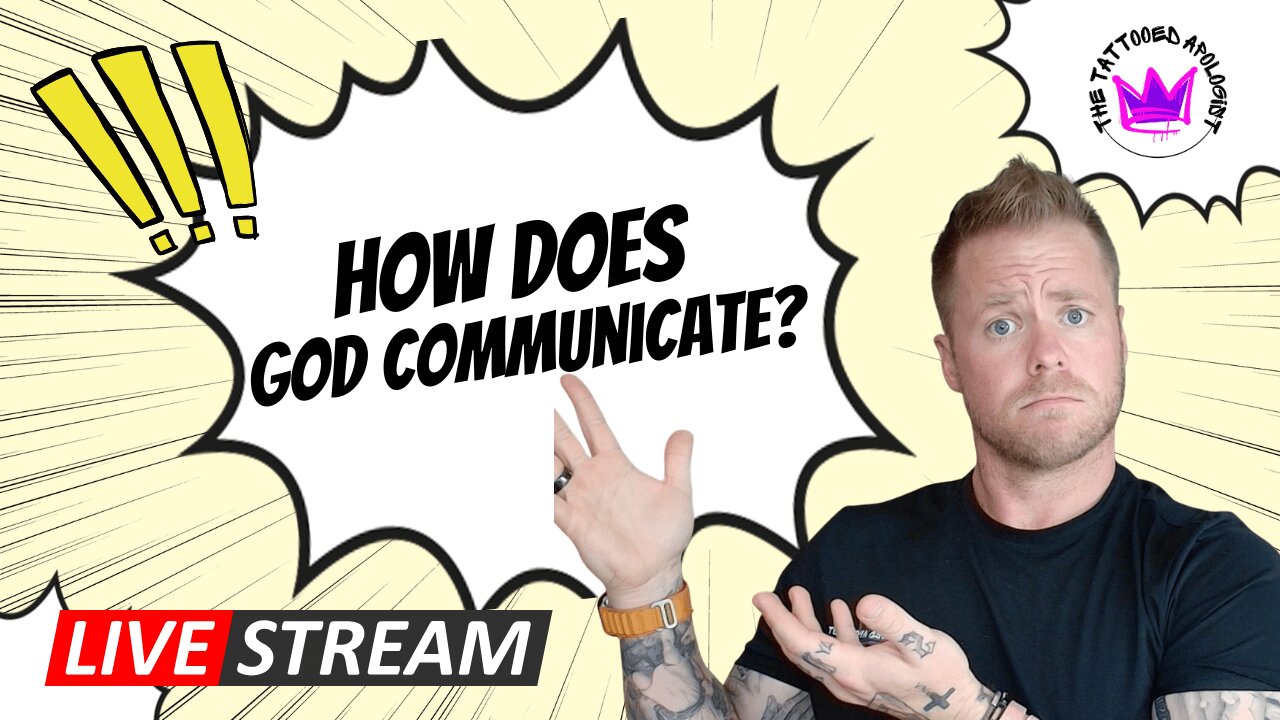Premium Only Content

How Does God Communicate Truth? | Divine Revelation Explained
“Long ago, at many times and in many ways, God spoke…”
— Hebrews 1:1 (ESV)
If God wants to be known, how does He speak in a way humans can actually understand?
This video explores the methodology of divine communication—the way God progressively, intentionally, and clearly reveals Himself throughout history.
Contrary to the skeptic’s claim that the Bible is inconsistent or contradictory, Hebrews 1:1 shows us that divine revelation is multifaceted, not messy. It’s not confusion—it’s progression. God didn’t change; He unfolded.
✅ What You’ll Learn:
Why “many times and many ways” points to a divinely orchestrated progression, not contradiction
How God accommodates human language and culture without diluting divine truth
Why revelation is both transcendent and accessible—bridging eternity and human experience
How Christ is the climax of divine communication, the Word made flesh (John 1:14)
What this means for biblical reliability, theological consistency, and how we interpret Scripture
📚 Scriptures Referenced:
Hebrews 1:1–2 – God’s multifaceted revelation
John 1:1, 14 – The Word became flesh
Luke 24:27 – Jesus in all the Scriptures
2 Timothy 3:16 – Scripture as God-breathed
Deuteronomy 29:29 – Secret things vs. revealed things
🧠 Philosophical Tie-In:
Divine revelation answers not just what is true, but how truth is known.
If God exists and speaks, then epistemology is anchored not in speculation but in self-disclosure.
God doesn’t just reveal facts; He reveals Himself. And He does it on our level, without compromising His holiness.
💬 “Revelation is not divine oversimplification—it’s divine compassion in language we can survive.”
🙏 Final Thought:
God doesn’t shout for attention—He speaks for connection.
From creation to covenant, from prophets to incarnation, His voice echoes through the story of Scripture.
The question isn’t whether God has spoken.
It’s whether we are listening.
-
 1:05:06
1:05:06
TheCrucible
3 hours agoThe Extravaganza! EP: 55 with guest co-host Rob Noerr (10/16/25)
82K4 -
 1:24:30
1:24:30
Kim Iversen
3 hours agoSpotify Bans Nick Fuentes — But the Shift Can’t Be Stopped
31K53 -
 DVR
DVR
Robert Gouveia
2 hours ago🚨 John Bolton INDICTED!! Antifa Terrorists ARRESTED!! Shutdown Firings FIGHT!
25.4K4 -
 2:21:57
2:21:57
MattMorseTV
5 hours ago $74.84 earned🔴Trump's EMERGENCY Oval Office ANNOUNCEMENT.🔴
124K87 -
 1:08:13
1:08:13
Michael Franzese
4 hours agoEric Trump and Michael Franzese: When The Government Attacks Your Family (Exclusive Sitdown)
39.2K8 -
 1:20:43
1:20:43
vivafrei
6 hours agoLive with Shawn Farash! Trump Impersonator and Conservative Activist! Viva Frei Interviews!
132K41 -
 1:43:44
1:43:44
The Quartering
6 hours agoFat Acceptance Is So Over, Church Attendance Surges, Tim Pool Water, D&D Is Full Woke Trash!
140K38 -
 LIVE
LIVE
LFA TV
22 hours agoBREAKING: JOHN BOLTON INDICTED! | THURSDAY 10/16/25
910 watching -
 2:43:30
2:43:30
freecastle
7 hours agoTAKE UP YOUR CROSS- Don't be deceived: God isn't mocked, for whatever one sows, will he also reap!
15.4K2 -
 1:10:28
1:10:28
The White House
5 hours agoPresident Trump Makes an Announcement, Oct. 16, 2025
45K43